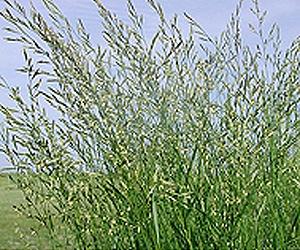At least today the average farmer
keeps his eyes open and checks on what works.
I suspect that a lot of the better grasses simply need a better pacing
of the grazing schedule to optimize productivity.
I also expect that we will see a
return to growing trees in pasture lands as a matter of sound husbandry. Here we note the benefits of the old oak savannah
in providing sparse shade and some surprisingly rich soils. We need to discover trees that do the same as
the acacia in Africa were the leaves also
provide forage.
The point is that is this needs
to be really thought through and supported.
Pasture land with ample shade, commercial timber production, wood chip
production, annual forage leaf production and shade cover for rich summer grass
production in combination with cattle husbandry to consume all the forage an
attractive alternative to the present uniculture approach that has to dance
around the high summer.
The idea of planning our pastures
as thinly populated woodlands with ample shade loving grasses should have been
obvious, but it was not even obvious in Africa were all the tools are in place.
Dairy Farmer Finds Unusual Forage Grass
by Don Comis
ARS geneticist Michael Casler has "rediscovered" a long forgotten forage grass called meadow fescue. It offers better nutrition than tall fescue and orchard grass.
A
A farmer's report of an unusual forage grass led Michael Casler, an Agricultural Research
Service (ARS) geneticist at the agency's U.S.
Dairy Forage
Research Center
in Madison , Wis.
ARS is USDA's principal intramural scientific research agency.
Casler has developed a new variety of meadow fescue called Hidden
Valley, and its seed is being grown for future release.
Non-toxic fungi called
endophytes live inside meadow fescue, helping it survive heat, drought and
pests. Unlike the toxic endophytes that inhabit many commercial varieties
of tall fescue and ryegrass, meadow fescue does not poison livestock.
Charles Opitz found the grass growing in the deep shade of a remnant
oak savannah on his dairy farm near Mineral Point, Wis.
Meadow fescue is very winter-hardy and persistent, having survived
decades of farming.
It emerged from oak savannah refuges to dominate many pastures in the Midwest 's driftless region, named for its lack of glacial
drift, the material left behind by retreating continental glaciers.
Casler and his colleagues have since found the plant on more than 300
farms in the driftless region of Wisconsin, Iowa
and Minnesota United
States
In another study, meadow fescue had a nutritional forage quality
advantage over tall fescue and orchard grass that may compensate for its
slightly lower annual yield further north, as reported in the Agronomy Journal.
Also, the yield gap begins to close with the frequent harvesting involved in
intensive grazing.

No comments:
Post a Comment